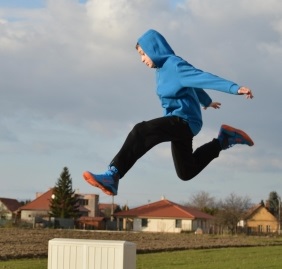 Monday evening was the last virtual synchronous class session for IS516: School Library Media Center. This week iSchool graduate students will be sharing their course learning in an online discussion forum . As a co-learner in this class, I am taking the opportunity to reflect here and will share this post with the class.
Monday evening was the last virtual synchronous class session for IS516: School Library Media Center. This week iSchool graduate students will be sharing their course learning in an online discussion forum . As a co-learner in this class, I am taking the opportunity to reflect here and will share this post with the class.
Time
There never seems to be enough time to accomplish all that we set out to do in a single class. All educators must prioritize. Inevitably the instructor’s values combined with the course description and stated student learning outcomes figure into those decisions.
Course Content and Textbook
To put this course in context, IS516: School Library Media Center focuses on instruction through the library program. Currently at the iSchool, school library administration topics are addressed in students’ practicums and in a general library management course. It was this focus on instruction that led me to apply to teach this course.
This was a golden opportunity for me to use my book Maximizing School Librarian Leadership: Building Connections for Learning and Advocacy (ALA 2018) in a graduate-level course for school librarians. I feel lucky to have had this opportunity.
I believe the book offered students a framework for exemplary practice. Each of the chapters fit into a flow of knowledge, skills, and behaviors that can lead school librarians into leadership roles on their campuses. Last June at ALA, I received one of the highest compliments of my career from a colleague who teaches school librarians at another university. She said, “We recommend your book to prospective students. If they see themselves serving at this level of leadership, we encourage them to enter our program.”
For me, the downside of using my book was that we could not take full advantage of the discussion questions, activities, and reflection prompts. The book was intended to be read one chapter a month, digested, and reflected upon over a nine-month period. Some of the questions, activities, and prompts are most effective for practicing school librarians rather than candidates. That said, I hope students in IS516 and other preservice courses will keep, revisit, and use the book in their practice of school librarianship. Perhaps they will share it with a principal or other decision-maker to start a conversation about how school librarians can serve as leaders.
Pre- and Post-Course Surveys
I asked students to complete a pre-course and a post-course survey. All students completed the pre-course survey; fourteen out of nineteen completed the post-course survey at the time of this blog post.
On the survey, I listed in alphabetical order the five roles identified by the American Association of School Librarians and asked students to rank them in importance: information specialist, instructional partner, leader, program administrator, and teacher. While leader remained number one by a narrow margin, both information specialist and instructional partner increased their rankings in the number one and number two slots. I assume this was a direct result of the content of this course and the assignment tasks as well.
The survey asked: “In your role as a school librarian, who will be your most critical ally and advocate, and why?”
| Position | Responses |
| Classroom Teachers |
7 |
| District Level Librarian Supervisor and Site Instructional Leader |
1 |
| Principals |
4 |
| Teachers and principal |
2 |
I believe the focus on instruction in this course put the emphasis on classroom teacher colleagues. I agree that classroom teachers and school librarians must collaborate and coteach in order to move the work of the school librarian into the center of the school’s academic program. This can be started without the explicit support of the school principal. But in terms of long-term success, in my experience and in school library research, the principal’s support for the school librarian and the library program are absolutely essential.
Students’ Top Priorities and Lingering Questions
The survey asked: “What is your top priority in maximizing school librarian leadership?” It was compelling to me that many students’ top priorities and their lingering questions were directly related. Top priorities included increasing understanding and gaining respect for the roles of the school librarian, the perception of administrators and colleagues that the librarian is an equal partner with classroom teachers, building relationships, and launching collaboration.
Many lingering questions focused on how to begin collaboration conversations and launch coteaching as an expected practice in their buildings. I would ask students to return to the “diffusion of innovations” Activity 2 on page 35 in our textbook. Who are the most promising partners? Who are the most strategic in terms of their ability to influence colleagues? To students who asked about collaborating in large schools, I would recommend identifying someone in the English language arts department, preferably the chair, as a first effort since every student must take ELA-R classes. (That was my strategy when I served in a high school with 1,800 students.)
Others asked about changing school cultures, (traditional) perceptions of school librarians’ roles or teaching as a “solo” activity. Although it seems like a simplistic response, everyone is from “Missouri,” the Show Me State. If you can show the benefits of clasroom-library collaboration to classroom teachers and students, you can begin your effort to create a collaborative culture of learning. When you strengthen that effort by partnering with administrators to help every school stakeholder reach their capacity, you have a recipe for successful change.
One student also wrote about advocating for full-time state-certified school librarians in every school in their district. (I invite you to follow the progress of the Tucson Unified School District School Librarian Restoration Project). Another asked about moving to a completely flexible schedule. Again, advocates for change must demonstrate how the need for professional school librarians and schedules that allow students to access the library at the point of need make a positive difference in student learning outcomes and in classroom teachers’ satisfaction and involvement in the library program and its resources, including its most valuable resource—the librarian.
My Reflection
The first time an instructor teaches a course can involve a steep learning curve. I was happy that I could align my book’s content with assignments that are prescribed for IS516. This course combined content from three courses I have previously taught at other universities. I was able to revise and update resources from those courses and identified or created many additional resources as well.
I created checklists and rubrics for all of the assignments in the course. All teachers learn from the first time out with assessment tools. This semester was no exception for me. Thank you to students for teaching me where the gaps were and where I can (and have) made improvements for next time.
The two-hour weekly synchronous meetings were new to me in a 16-week course. I still find this format challenging in terms of ensuring interactivity in that time slot and keeping our conversations fresh over the course of the semester. I especially appreciated students’ willingness to explore Twitter chats as a learning platform. Our chats were an ideal way for everyone to share in real time. They were also a way for me to learn more about what students were gleaning from the textbook and how they were connecting it to their current and future practice. I hope students will continue to grow professionally using this tool. This semester, I also learned about some new technologies and their applications in classrooms and libraries from students’ work products.
I am grateful to the students in IS516 and for the iSchool for giving me the opportunity to teach this course. I appreciate IS516 students for co-creating a culture of collaboration within our course. From my perspective, the course focus on instruction and my emphasis on leadership through coteaching combined to make this learning experience influential for students’ current and future practice. It also offered me the opportunity to practice what I preach—continuous learning. I will apply my learning in future courses with graduate students and in my work with school librarians practicing in the field.
“The conditions are right and ripe for school librarians to maximize their leadership roles in building collaborative school cultures. There is an urgent need for students, educators, administrators, and community to work together to create dynamic learning environments” (Moreillon 2018, x).
Our profession needs the best prepared candidates to serve school library stakeholders through the library program. I believe IS516 Fall 2019 students are prepared to create optimal conditions for teaching and learning and for taking leadership roles in their schools.
Work Cited
Moreillon, Judi. 2018. Maximizing School Librarian Leadership: Making Connections for Learning and Advocacy. Chicago: ALA.
Image Credit
mrkrndvs. “Isolation vs. Collaboration.” Flickr.com, https://www.flickr.com/photos/113562593@N07/35978055230








